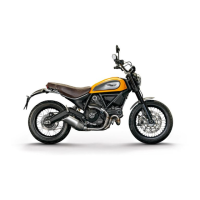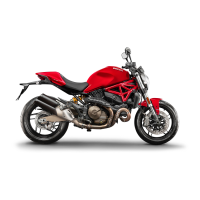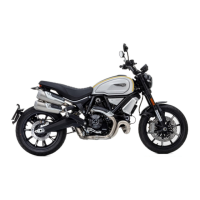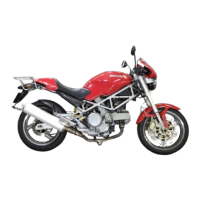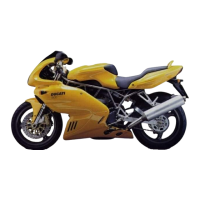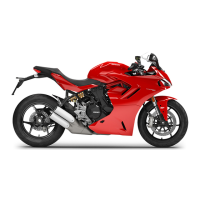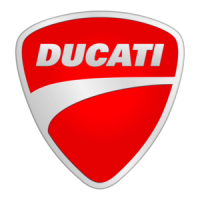
Do you have a question about the Ducati Scrambler 400 and is the answer not in the manual?
| Displacement | 399 cc |
|---|---|
| Transmission | 6-speed |
| ABS | Standard |
| Frame | Tubular steel trellis frame |
| Fuel Tank Capacity | 13.5 liters (3.57 gallons) |
| Seat Height | 790 mm (31.1 in) |
| Front Suspension | 41 mm upside-down fork |
| Rear Suspension | Preload-adjustable monoshock |
| Fuel System | Electronic fuel injection |
| Max Power | 40 hp (30 kW) @ 8, 000 rpm |
All riders must hold a valid license.
Designed for on-road use; limits on towing and load capacity.
Familiarize with controls and perform pre-ride checks.
Start engine outdoors; maintain proper body position and control.
Safe refuelling practices, including fuel type and ventilation.
Guidelines for safe load distribution and weight limits.
Precautions for brake dust and corrosive brake fluid.
Specific features of the ICON model.
Specific features of the URBAN ENDURO model.
Specific features of the FULL THROTTLE model.
Specific features of the CLASSIC model.
Description of the instrument panel's LCD and warning lights.
Indicator lights for ABS status and over-revving/immobilizer.
Description of UP/DOWN, FLASH, and CANCEL buttons.
How the vehicle speed is displayed and error indicators.
How engine RPM is displayed using a bargraph.
Displays total distance covered, saved permanently.
Instrument panel manages warnings for abnormal behavior.
Table of displayed errors and their descriptions.
Format for time display and reset upon power loss.
How to enter the setting menu with speed and button constraints.
Allows enabling or disabling the ABS system via the SETTING MENU.
Enabling/modifying a 4-digit PIN for temporary start.
Step-by-step guide to activate and enter your PIN.
Diagram showing the position of major controls.
Description of the four positions: ON, OFF, LOCK, PARK.
Controls for dip switch, high-beam, and turn indicators.
Controls for system power and engine starting.
How to shift gears using the pedal and indicator lights.
Safe procedures for using the side stand.
Adjusting spring preload for different load conditions.
Guidelines for the initial running-in period.
Thorough check of fuel, oil, brakes, tires, controls, lights, locks, and stand.
How ABS avoids wheel lockup and preserves traction.
Compatibility warning regarding ethanol content in fuel.
How to check brake pad thickness through inspection hole.
Warnings regarding battery gases and ventilation during charging.
Procedure for checking drive chain tension and proper range.
Procedure for checking and adjusting headlight aim.
Procedures and warnings for tyre repair/replacement.
How to check engine oil level using the sight glass.
Table of operations to be performed by the dealer based on mileage/time.
Overall weight and maximum allowed weight specifications.
Diagram and specifications for motorcycle dimensions.
Maximum power and torque figures for the engine.
Description of the ABS system and front/rear brake specs.
